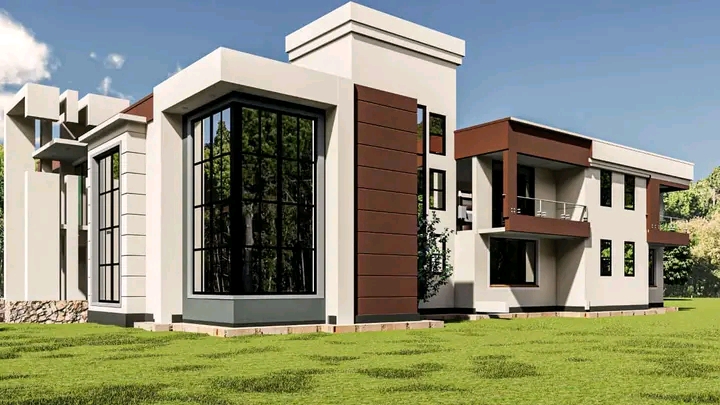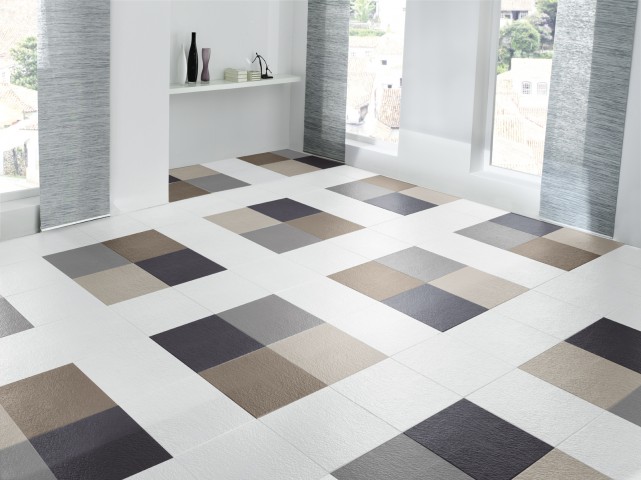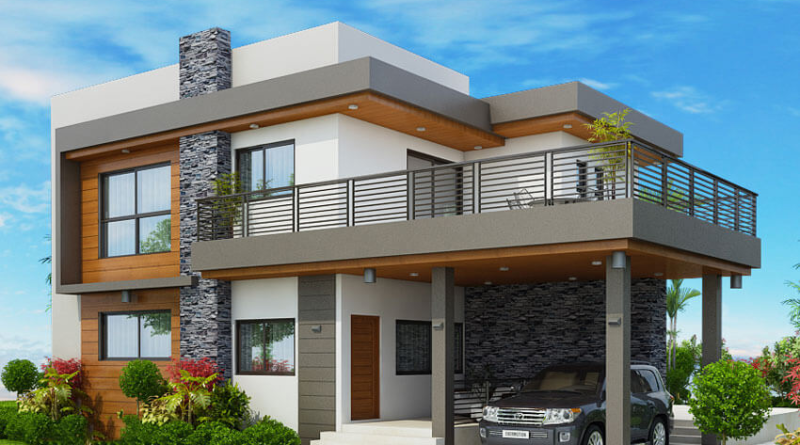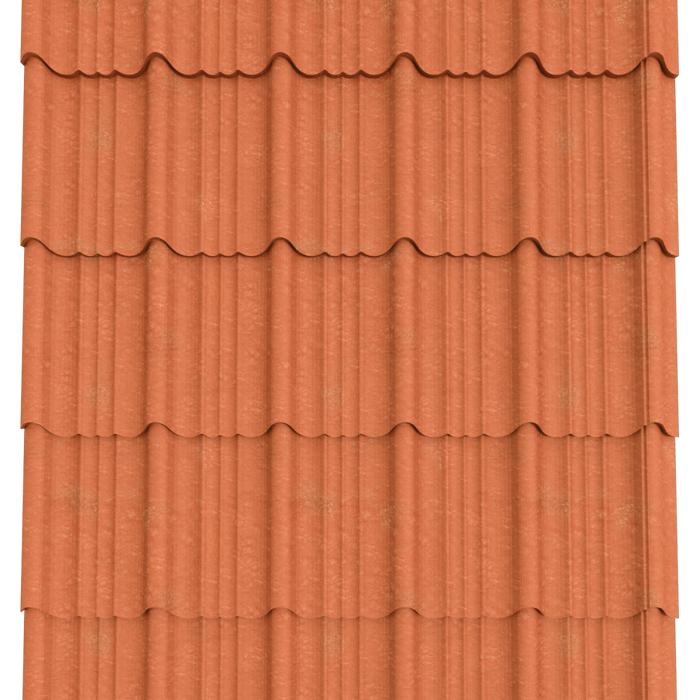Choosing the perfect house design in Kenya is an exciting yet challenging task. Whether you’re planning to build your dream home or an investment property, there are several key factors to consider. From budget constraints to modern design trends, understanding the local building regulations and sustainable options can make a significant difference in your decision-making process.
Key Considerations for Choosing House Designs in Kenya:
Budgeting and Cost Estimation
Understanding your budget is crucial when choosing a house design. Costs can vary widely depending on materials, size, and design complexity. Start by determining how much you’re willing to spend. Get detailed cost estimates from architects and builders. Additional expenses such as permits, utilities, and landscaping. Remember, staying within budget ensures your project is financially viable from start to finish.
Local Building Regulations and Permits
Before you settle on a design, familiarize yourself with local building codes and regulations. Each county in Kenya may have different requirements. Ensure your design complies with these regulations to avoid legal issues. Obtain necessary permits early to prevent delays. Consulting with local authorities or a knowledgeable contractor can save you time and hassle.
Environmental and Climate Considerations
Kenya’s diverse climate affects house design choices. Coastal regions may benefit from designs that enhance natural ventilation to combat humidity, while highland areas might require insulation against cooler temperatures. Consider the orientation of your house to maximize natural light and energy efficiency. Incorporating eco-friendly materials and sustainable practices can also reduce your environmental footprint.
Lifestyle and Space Requirements
Think about your lifestyle needs when choosing a design. Do you need a home office, a large kitchen, or extra bedrooms? Consider future needs like expanding your family or accommodating guests. Analyze how you use space daily to ensure your design meets these requirements. Flexible spaces that can adapt to changing needs offer great long-term value.
Access to Utilities and Infrastructure
Access to essential services like water, electricity, and the internet is vital. Ensure your chosen design can easily connect to these utilities. If building in a remote area, consider the cost and feasibility of extending infrastructure. Reliable access to utilities ensures your home is comfortable and functional.
Neighborhood and Surrounding Area
The location of your home influences its design. Urban areas may require more compact, vertical designs due to limited space. In contrast, rural areas offer more flexibility for sprawling layouts. Evaluate the surrounding neighborhood’s aesthetics and architectural styles to ensure your home fits in harmoniously. Proximity to schools, healthcare, and shopping centers also impacts your daily convenience.
Related post: Why the Design and Build Concept is Ideal for Private Developers
Future Resale Value
Consider the resale value of your house design. Trends change, but classic, timeless designs often retain their value. Features like energy efficiency, modern amenities, and good-quality finishes attract potential buyers. Planning for potential resale ensures your investment remains valuable over time.
By keeping these key considerations in mind, you can choose a house design in Kenya that suits your needs, budget, and lifestyle, while also being mindful of regulations and future resale potential.
Popular House Plans in Kenya
Bungalow House Plans
Bungalow house plans are a favorite among many Kenyans. They typically feature a single-story layout, making them ideal for families with young children or elderly members. These homes are easy to maintain and navigate, and their open-plan designs often include spacious living areas that connect seamlessly to the kitchen and dining spaces. Bungalows also offer the flexibility to expand vertically if you decide to add more rooms in the future.
Bungalow House Plans
These are some of the bungalow house plans in Kenya you can review. Click on the link for more details
- Sale! 4 Bedroom Bungalow Building Plans WKRE053
KSh25,000.00Original price was: KSh25,000.00.KSh20,000.00Current price is: KSh20,000.00. Add to cart - Sale! 4 Bedroom Bungalow House Plans in KenyaRated 5.00 out of 5
KSh35,000.00Original price was: KSh35,000.00.KSh25,000.00Current price is: KSh25,000.00. Add to cart - Sale! 4 Bedroom Bungalow House Plans WKRE028
KSh25,000.00Original price was: KSh25,000.00.KSh20,000.00Current price is: KSh20,000.00. Add to cart - Sale! 5 Bedroom Bungalow Building Plans WKRE051
KSh25,000.00Original price was: KSh25,000.00.KSh20,000.00Current price is: KSh20,000.00. Add to cart - Sale! Affordable 3BR Bungalow House plans in Kenya
KSh30,000.00Original price was: KSh30,000.00.KSh25,000.00Current price is: KSh25,000.00. Add to cart - Sale! Affordable Bungalow 3br house plans in Kenya
KSh30,000.00Original price was: KSh30,000.00.KSh25,000.00Current price is: KSh25,000.00. Add to cart - Sale! An exquisite 4 Bedroom Bungalow design in Kenya WKRE006
KSh30,000.00Original price was: KSh30,000.00.KSh25,000.00Current price is: KSh25,000.00. Add to cart - Sale! Bespoke Church House Plans in Kenya WKRE041
KSh25,000.00Original price was: KSh25,000.00.KSh20,000.00Current price is: KSh20,000.00. Add to cart - Sale! Bungalow 5 Bedrooms House Designs Kenya with Pantry and Patio
KSh40,000.00Original price was: KSh40,000.00.KSh35,000.00Current price is: KSh35,000.00. Add to cart - Sale! 2BR Duplex House Designs in Kenya
KSh35,000.00Original price was: KSh35,000.00.KSh25,000.00Current price is: KSh25,000.00. Add to cart - Sale! 3 Bedroom Bungalow Flat Roof House Drawings WKRE024
KSh25,000.00Original price was: KSh25,000.00.KSh20,000.00Current price is: KSh20,000.00. Add to cart - Sale! 3 Bedroom Bungalow House Drawings WKRE023
KSh25,000.00Original price was: KSh25,000.00.KSh20,000.00Current price is: KSh20,000.00. Add to cart - Sale! 3 Bedroom Bungalow House Plans in Kenya WKRE037
KSh25,000.00Original price was: KSh25,000.00.KSh20,000.00Current price is: KSh20,000.00. Add to cart - Sale! 3 Bedroom Bungalow House Plans WKRE014
KSh25,000.00Original price was: KSh25,000.00.KSh20,000.00Current price is: KSh20,000.00. Add to cart - Sale! 3 Bedroom Bungalow House Plans WKRE030
KSh25,000.00Original price was: KSh25,000.00.KSh20,000.00Current price is: KSh20,000.00. Add to cart - Sale! 3 Bedroom Single-Storey House Plans WKRE013
KSh30,000.00Original price was: KSh30,000.00.KSh25,000.00Current price is: KSh25,000.00. Add to cart - Sale! 3 Bedroom Single-Storey House WKRE012
KSh30,000.00Original price was: KSh30,000.00.KSh25,000.00Current price is: KSh25,000.00. Add to cart - Sale! 3-bedroom bungalow house designs in Kenya WKRE059
KSh25,000.00Original price was: KSh25,000.00.KSh20,000.00Current price is: KSh20,000.00. Add to cart
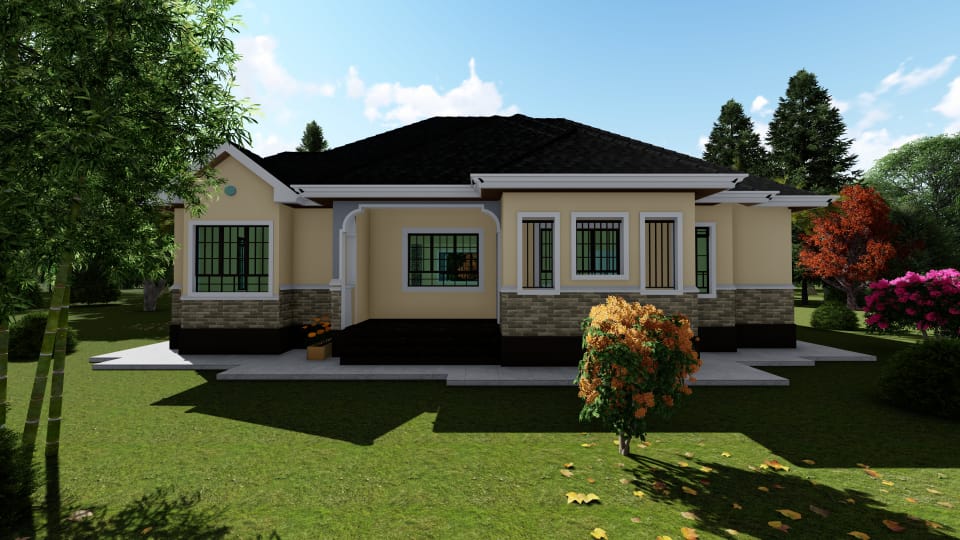
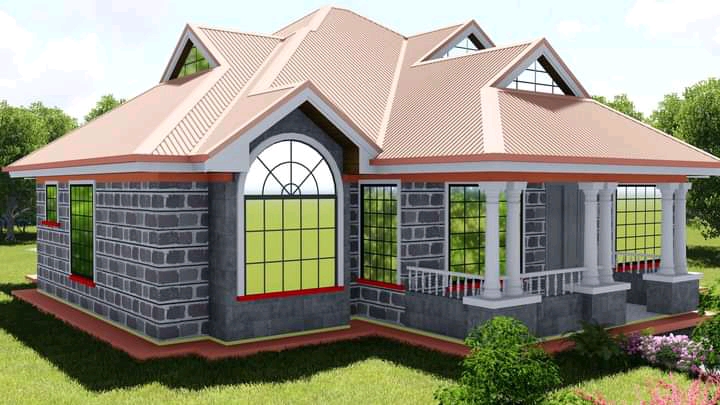
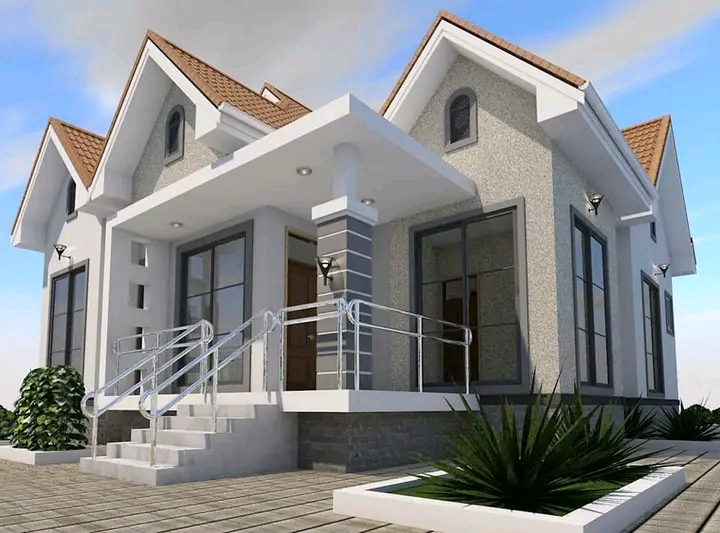

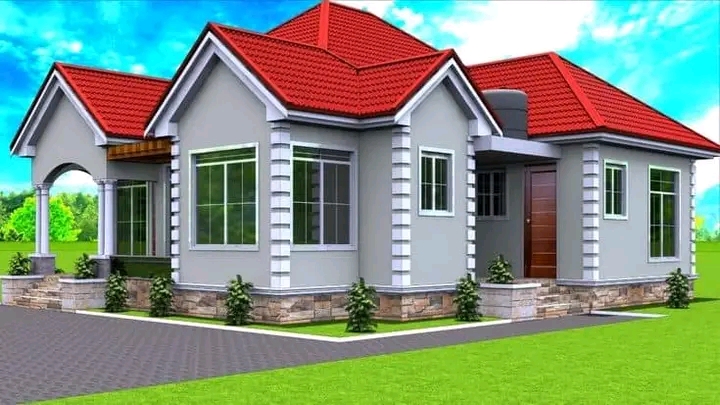
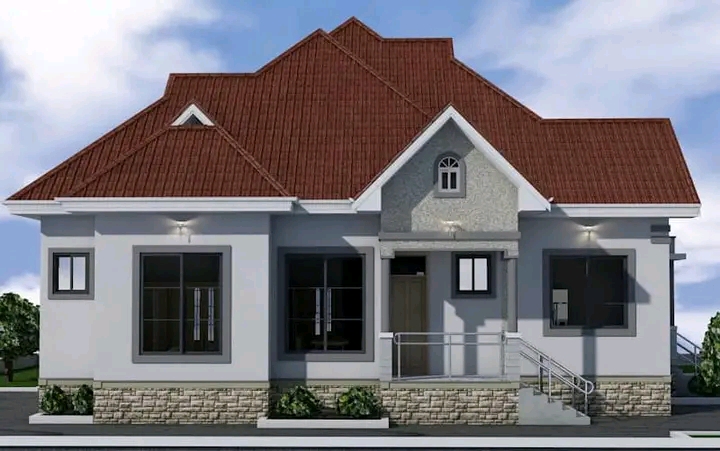
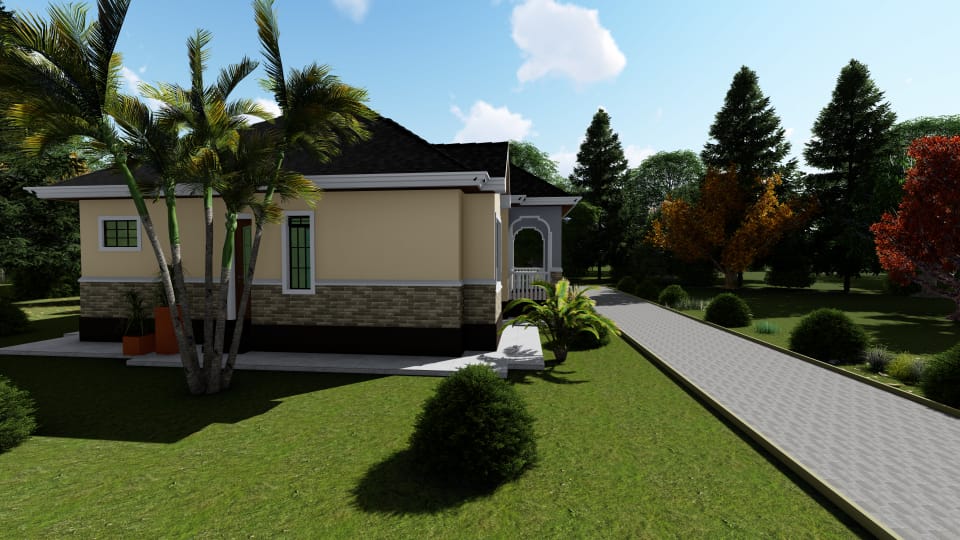
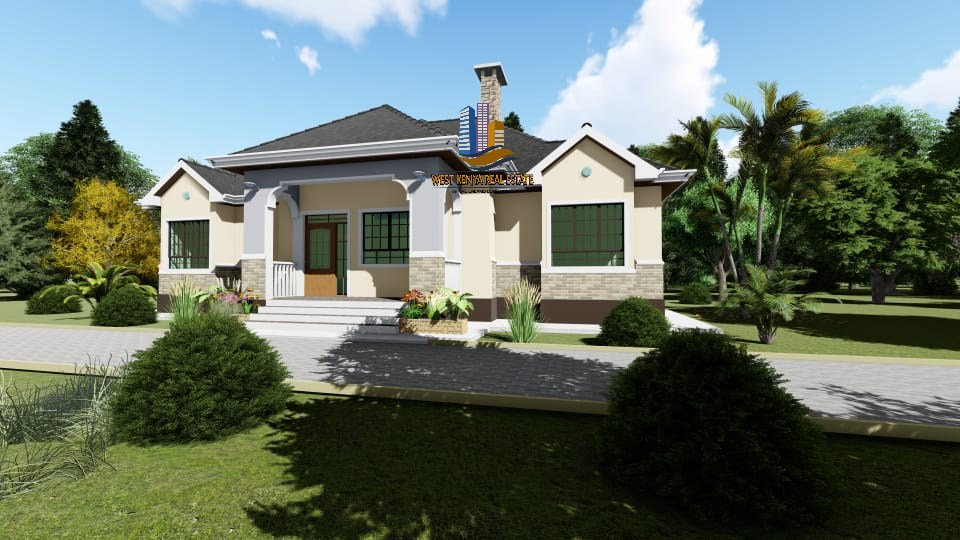
Maisonette House Plans
Maisonettes are another popular choice, especially in urban areas. These two-story houses maximize land use, providing more living space without expanding the building footprint. Maisonettes typically feature living areas and kitchens on the ground floor, with bedrooms located upstairs for added privacy. This design is perfect for growing families and those who value distinct separation between communal and private spaces.
Maisonette House Plans
This category profiles all maisonette house designs in Kenya, largely 3br maisonette house designs in Kenya, 4br Maisonette House Plans and 5br maisonette house designs in Kenya.
- Sale! 3 Bedroom Maisonette Building Plan in KenyaRated 5.00 out of 5
KSh40,000.00Original price was: KSh40,000.00.KSh30,000.00Current price is: KSh30,000.00. Add to cart - Sale! 3BR Maisonette House Designs in Kenya with Rooftop Garden with skylightRated 5.00 out of 5
KSh35,000.00Original price was: KSh35,000.00.KSh25,000.00Current price is: KSh25,000.00. Add to cart - Sale! 4 Bedroom Flat Roof DesignRated 5.00 out of 5
KSh35,000.00Original price was: KSh35,000.00.KSh30,000.00Current price is: KSh30,000.00. Add to cart - Sale! 4 Bedroom Maisonette Building Plans WKRE052
KSh35,000.00Original price was: KSh35,000.00.KSh30,000.00Current price is: KSh30,000.00. Add to cart - Sale! 4 Bedroom Maisonette design in Kenya flat roof Code WKRE001
KSh35,000.00Original price was: KSh35,000.00.KSh30,000.00Current price is: KSh30,000.00. Add to cart - Sale! 4 Bedroom Maisonette House Plans in Kenya
KSh40,000.00Original price was: KSh40,000.00.KSh35,000.00Current price is: KSh35,000.00. Add to cart - Sale! 4Bedroom Maisonette House Plans in Kenya with atticRated 5.00 out of 5
KSh40,000.00Original price was: KSh40,000.00.KSh35,000.00Current price is: KSh35,000.00. Add to cart - Sale! 4BR Maisonette House Designs in KenyaRated 5.00 out of 5
KSh40,000.00Original price was: KSh40,000.00.KSh35,000.00Current price is: KSh35,000.00. Add to cart - Sale! 4BR Maisonette House Plans in Kenya with attic roof and home officeRated 5.00 out of 5
KSh40,000.00Original price was: KSh40,000.00.KSh35,000.00Current price is: KSh35,000.00. Add to cart
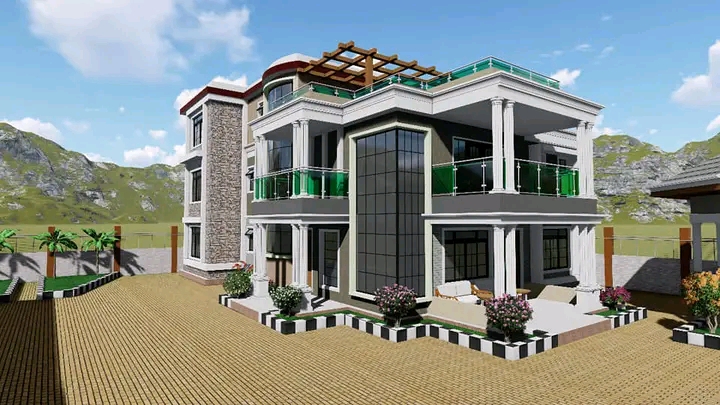
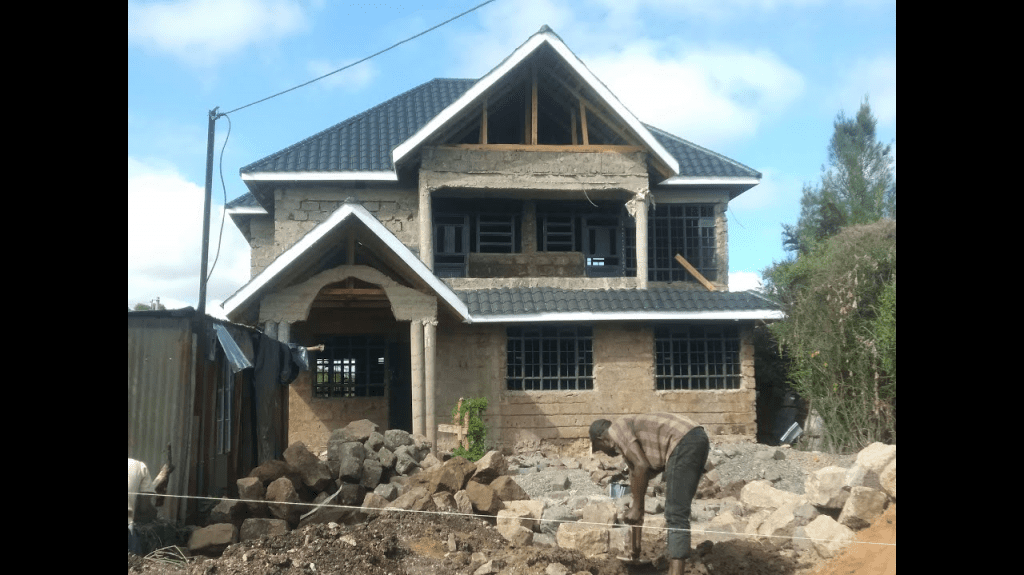

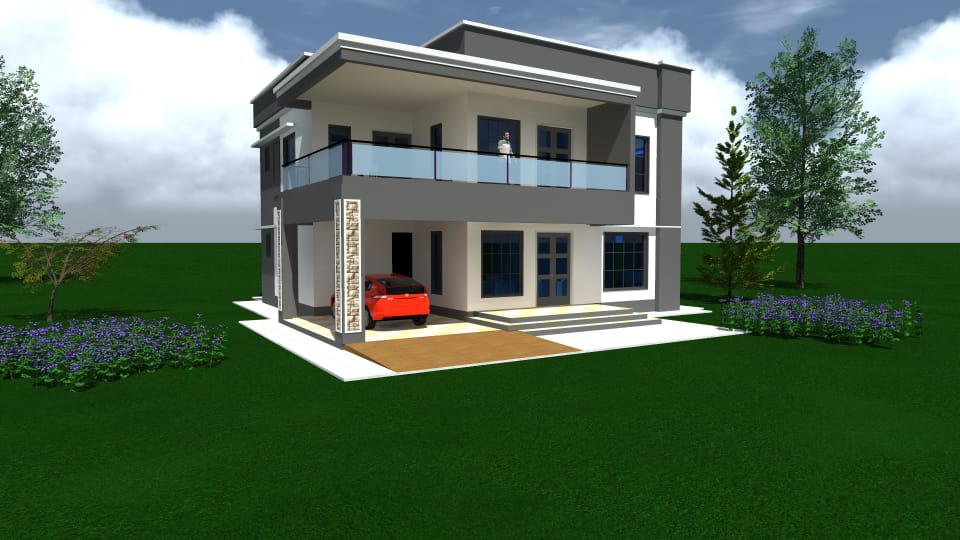
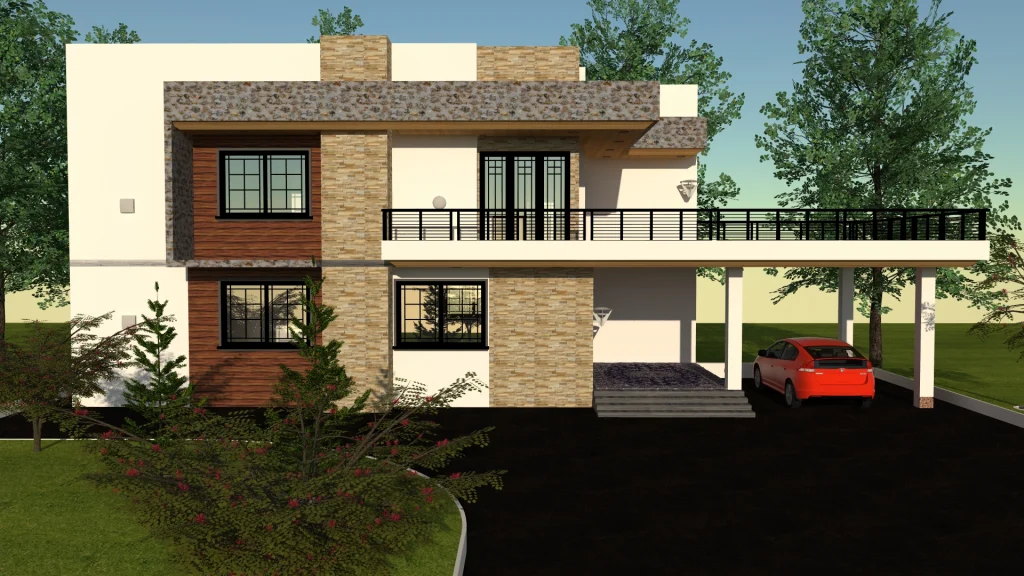
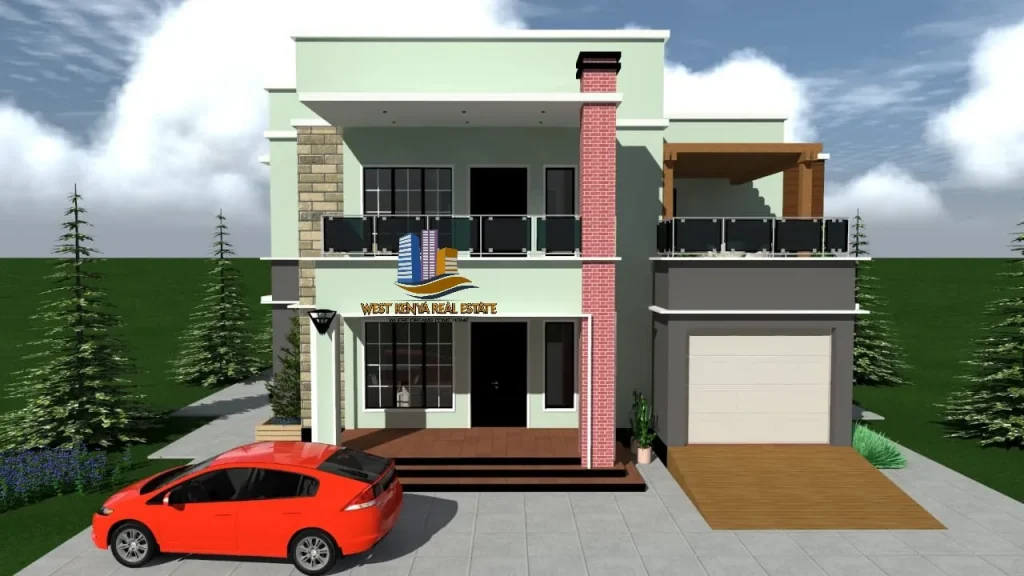
Modern House Plans
Modern house plans are increasingly sought after for their sleek, contemporary aesthetics and functional designs. These homes often feature minimalist interiors, large windows for natural light, and open-plan living areas that create a sense of spaciousness. Modern designs also emphasize energy efficiency, incorporating sustainable materials and technologies. They cater to professionals looking for a stylish, low-maintenance home that reflects current architectural trends.
Colonial House Plans
Colonial house plans blend traditional charm with modern convenience. These homes often feature symmetrical facades, large verandas, and high ceilings. Inside, you’ll find a mix of formal and informal living spaces, suitable for entertaining and family life. Colonial designs are timeless, offering a sense of elegance and stability that appeals to many homeowners in Kenya.
Contemporary House Plans
Contemporary house plans are similar to modern designs but offer more flexibility in style and layout. These homes can include innovative architectural features like cantilevered sections, mixed-material facades, and unconventional shapes. The interiors are usually open and adaptable, allowing for personalized touches and functional living spaces. Contemporary plans are perfect for those who want a unique, custom home that stands out.
Ranch House Plans
Ranch house plans are practical and straightforward, often featuring a single-story layout with a long, low profile. These homes are ideal for large plots of land, offering extensive living space and easy access to outdoor areas. Ranch homes usually have simple, efficient floor plans that include spacious kitchens, large living rooms, and multiple bedrooms. They are a great option for families who enjoy outdoor living and need plenty of room to spread out.
Split-Level House Plans
Split-level house plans offer a unique solution for sloped plots or homeowners looking for a distinctive layout. These homes have multiple levels, typically with staggered floors that separate living, dining, and sleeping areas. Split-level designs provide a good balance of privacy and communal space, making them suitable for families. They also add an interesting architectural element to your home, with varied elevations and sections.
Eco-Friendly House Plans
Eco-friendly house plans are gaining popularity due to their focus on sustainability and energy efficiency. These designs incorporate features like solar panels, rainwater harvesting systems, and natural ventilation. Eco-friendly homes use sustainable materials and construction techniques that reduce environmental impact. They are perfect for environmentally conscious homeowners looking to minimize their carbon footprint while enjoying a comfortable, modern living space.
Choosing the right house plan in Kenya involves considering your personal needs, lifestyle, and future plans. Whether you prefer the simplicity of a bungalow or the sophistication of a modern home, there’s a design that’s perfect for you.
Cost and Budgeting for House Designs in Kenya
Understanding Construction Costs
When planning to build a house in Kenya, understanding construction costs is crucial. Costs can vary significantly depending on factors such as location, materials, and labor. Urban areas like Nairobi tend to have higher construction costs due to increased demand and higher prices for materials and labor. Rural areas may offer some savings, but transportation costs for materials can offset these benefits. It’s essential to get detailed quotes and work with reputable contractors to ensure accurate cost estimations.
Budgeting for Materials
Materials play a significant role in your overall budget. The choice between local and imported materials can impact costs. Locally sourced materials are generally more affordable and readily available. However, imported materials might be necessary for specific design features or higher quality finishes. Create a detailed list of required materials and compare prices from different suppliers. Consider using sustainable materials, which can be cost-effective and environmentally friendly in the long run.
Labor Costs
Labor costs are another major component of your budget. Skilled labor, such as architects, engineers, and specialized contractors, tends to be more expensive but crucial for quality construction. Unskilled labor costs are relatively lower but still significant. Hiring experienced professionals might seem costly initially, but it can save you money by preventing costly mistakes and ensuring the project is completed efficiently.
Related Post: Exploring the Significance of 4-Bedroom House Designs in Kenya
Additional Costs to Consider
Beyond construction and labor, there are additional costs to consider. These include permits, architectural designs, and utility connections. Permit costs vary by county and are necessary to comply with local regulations. Architectural design fees can vary based on the complexity and uniqueness of your house plan. Utility connections, such as water, electricity, and sewage, also add to the total cost. Factor in these expenses early to avoid budget overruns.
Financing Options
Securing financing is a crucial step in your building journey. In Kenya, there are several financing options available, including mortgages, personal loans, and SACCOs (Savings and Credit Cooperative Organizations). Mortgages offer long-term financing but require a down payment and regular repayments. Personal loans can provide quick access to funds but typically come with higher interest rates. SACCOs are a popular choice for many Kenyans, offering favorable terms and lower interest rates compared to traditional banks.
Cost-Saving Tips
There are ways to save on construction costs without compromising quality. Consider a phased construction approach, where you complete the project in stages based on available funds. This method allows you to spread costs over time. Opt for a simple design that uses space efficiently. Minimize changes to the plan once construction begins, as alterations can be costly. Additionally, purchase materials in bulk or during off-peak seasons to benefit from discounts.
Budgeting for Future Maintenance
It’s also important to budget for future maintenance. Regular maintenance keeps your home in good condition and prevents costly repairs. Allocate funds for routine tasks such as painting, roof repairs, and plumbing maintenance. Consider investing in durable materials and quality workmanship upfront to reduce long-term maintenance costs.
Careful budgeting and understanding all associated costs will ensure a smoother construction process. By planning effectively, you can build your dream home in Kenya without financial stress.
Modern Trends in House Designs in Kenya
As you embark on designing your dream home in Kenya, it’s essential to stay updated on the latest architectural trends. Modern house designs are constantly evolving to meet the needs of homeowners, incorporating innovative features and sustainable practices. Here are some key trends shaping house designs in Kenya today:
Open-Plan Living
Modern house designs often embrace open-plan living spaces, blurring the lines between the kitchen, dining area, and living room. This layout creates a sense of spaciousness and promotes social interaction, making it ideal for family gatherings and entertaining guests. By removing unnecessary walls, you can maximize natural light and ventilation, enhancing the overall ambiance of your home.
Sustainable Design
With growing awareness of environmental issues, many homeowners are opting for eco-friendly house designs. Sustainable features such as solar panels, rainwater harvesting systems, and passive cooling techniques can significantly reduce your home’s carbon footprint and energy bills. Incorporating natural materials like bamboo, recycled timber, and clay bricks not only enhances sustainability but also adds a touch of warmth and character to your home.
Smart Home Technology
Advancements in technology have revolutionized the way we interact with our homes. Smart home systems allow you to control lighting, temperature, security, and entertainment systems remotely using your smartphone or voice commands. Integrating these technologies into your house design not only enhances convenience but also improves energy efficiency and security.
Flexible Spaces
Modern house designs prioritize flexibility and adaptability, allowing spaces to serve multiple functions. Rooms with movable partitions, convertible furniture, and modular layouts can easily transform to accommodate changing needs and lifestyles. Whether you need a home office, a guest room, or a play area for your children, flexible spaces provide the versatility to meet your evolving requirements.
Minimalist Aesthetics
Clean lines, minimalist decor, and clutter-free interiors characterize modern house designs. Emphasizing simplicity and functionality, minimalist aesthetics create a sense of calm and tranquility in your home. By carefully selecting furniture, accessories, and finishes, you can achieve a sleek, contemporary look that stands the test of time.
Related post: TWO STOREY HOUSE DESIGNS IN KENYA
Integration of Outdoor Spaces
Modern house designs seamlessly integrate indoor and outdoor living spaces, blurring the boundaries between the two. Expansive windows, sliding glass doors, and outdoor patios or terraces create a seamless transition from the interior to the exterior, allowing you to enjoy nature and fresh air year-round. Incorporating greenery, water features, and outdoor seating areas enhances the overall livability and aesthetics of your home.
By incorporating these modern trends into your house design, you can create a home that is not only stylish and functional but also sustainable and adaptable to your evolving needs. Stay informed about the latest innovations in architectural design to ensure that your dream home reflects the best of contemporary living.
Modern Trends in House Designs in Kenya
Embracing Minimalism
Minimalism is making waves in Kenyan house designs. Clean lines, open spaces, and a focus on functionality define this trend. You’ll notice fewer walls, larger windows, and multipurpose rooms. The aim is to create airy, uncluttered spaces that enhance comfort and relaxation. Minimalist homes often use neutral color palettes, enhancing the serene environment. This trend not only creates beautiful spaces but also encourages a simpler, more organized lifestyle.
Building Practices
Sustainability is no longer a niche; it’s becoming mainstream. Modern Kenyan house designs increasingly incorporate eco-friendly materials and energy-efficient technologies. Solar panels, rainwater harvesting systems, and natural ventilation are common features. Using locally sourced, sustainable materials reduces the carbon footprint and supports local industries. This trend aligns with global efforts to combat climate change and promotes a healthier living environment.
Smart Home Integration
The smart home revolution is here. Integrating technology into house designs enhances convenience and security. Modern homes in Kenya are equipped with smart lighting, security systems, and climate control. These technologies can be controlled remotely via smartphones, adding an extra layer of comfort and safety. Smart home features also improve energy efficiency, reducing utility bills and environmental impact.
Indoor-Outdoor Living
Blur the lines between indoor and outdoor spaces. Modern house designs in Kenya often include large glass doors that open to patios, gardens, or balconies. This seamless transition allows you to enjoy the beautiful Kenyan climate year-round. Outdoor kitchens, lounge areas, and dining spaces are becoming popular, providing perfect settings for entertaining guests or relaxing with family.
Innovative Use of Space
With rising land costs, maximizing space is crucial. Modern designs focus on smart, innovative use of space. Built-in storage solutions, multi-functional furniture, and open floor plans make homes feel larger and more efficient. Loft spaces, under-stair storage, and convertible furniture ensure every square meter is utilized effectively. This trend is especially important in urban areas where space is at a premium.
Incorporating Natural Elements
Nature-inspired designs are trending. Using natural materials like stone, wood, and bamboo creates a warm, inviting atmosphere. Large windows and skylights bring in natural light, reducing the need for artificial lighting during the day. Indoor plants add a touch of greenery, improving air quality and enhancing the aesthetic appeal. This connection to nature promotes well-being and creates a tranquil living space.
Customization and Personalization
Homeowners are increasingly seeking unique, personalized designs. Customization allows you to tailor every aspect of your home to fit your lifestyle and preferences. From custom-built furniture to unique architectural features, personalization ensures your home is a true reflection of you. This trend highlights the importance of individuality and creates spaces that are not only functional but also deeply personal.
Luxury Finishes
Luxury is not just for the wealthy. Modern house designs in Kenya often feature high-end finishes that add a touch of elegance. Think granite countertops, hardwood floors, and designer fixtures. These finishes not only enhance the aesthetic appeal but also increase the value of the property. Investing in quality materials and craftsmanship ensures your home remains timeless and durable.
Staying updated with modern trends in house designs can inspire you to create a home that is stylish, functional, and sustainable. Whether you’re building a new home or renovating an existing one, incorporating these trends will ensure your home stands out and meets the demands of contemporary living.
Low-Cost House Designs in Kenya
Prefabricated Homes
Prefabricated or prefab homes are gaining popularity as a low-cost housing solution in Kenya. These homes are constructed off-site in a factory and then transported to the building site for assembly. Prefab homes are cost-effective because they require less labor and construction time compared to traditional building methods. Additionally, the materials used in prefab construction are often more affordable, making these homes an attractive option for budget-conscious individuals.
Small Footprint Designs
Opting for a small footprint design can significantly reduce construction costs. These designs prioritize efficient use of space without sacrificing functionality. Compact floor plans, multi-purpose rooms, and clever storage solutions maximize usable space while minimizing construction expenses. Small footprint designs also require fewer materials, resulting in lower overall costs without compromising on quality or comfort.
Cost-Effective Materials
Choosing the right materials can have a significant impact on the cost of construction. Inexpensive yet durable materials such as stabilized soil blocks, corrugated iron sheets, and timber can help keep costs down without compromising structural integrity. Additionally, sourcing materials locally can further reduce expenses by minimizing transportation costs. By selecting cost-effective materials, you can build a quality home while staying within your budget.
Basic Design Features
Simplifying the design of your home can help reduce construction costs. Basic design features such as rectangular floor plans, flat roofs, and simple finishes require less labor and materials to construct. Avoiding complex architectural elements and unnecessary embellishments can help keep costs down while still achieving a functional and aesthetically pleasing home. By focusing on essential design elements, you can build a low-cost home without sacrificing quality or style.
Energy-Efficient Design
Investing in energy-efficient design features can help lower long-term operating costs for your home. Incorporating passive solar design principles, such as strategic window placement and thermal insulation, can help regulate indoor temperatures and reduce the need for artificial heating and cooling. Additionally, choosing energy-efficient appliances and lighting fixtures can further reduce energy consumption and utility bills. While energy-efficient design features may require an initial investment, the long-term cost savings can make them a worthwhile investment for budget-conscious homeowners.
Modular Construction
Modular construction involves assembling pre-built modules or sections of a home on-site to create the final structure. This construction method can significantly reduce labor costs and construction time compared to traditional building methods. Additionally, modular homes often require fewer materials, resulting in lower overall costs. By opting for modular construction, you can build a quality home at a fraction of the cost of traditional construction methods.
Community-Based Housing Initiatives
Community-based housing initiatives offer an affordable housing solution for low-income individuals and families. These initiatives involve pooling resources and collaborating with other community members to build homes at reduced costs. By leveraging economies of scale and sharing resources, community-based housing projects can significantly lower construction costs. Additionally, these initiatives often incorporate sweat equity, allowing participants to contribute labor in exchange for reduced housing costs. Participating in a community-based housing initiative can help you achieve homeownership at a lower cost while also fostering a sense of community and solidarity.
Low-cost house designs in Kenya offer affordable housing solutions without compromising on quality or comfort. By exploring alternative construction methods, selecting cost-effective materials, and prioritizing energy-efficient design features, you can build a home that meets your needs and budget. Whether you opt for prefab homes, small footprint designs, or community-based housing initiatives, there are plenty of options available to help you achieve homeownership without breaking the bank.
Legal and Regulatory Aspects of Building a House in Kenya
Building Permits and Approvals
Before embarking on any construction project in Kenya, it’s essential to obtain the necessary building permits and approvals from the relevant authorities. This process involves submitting detailed building plans and specifications for review to ensure compliance with local building codes and regulations. Failure to obtain the required permits can result in costly fines, delays, and even demolition orders. By adhering to legal requirements and obtaining the necessary approvals upfront, you can avoid potential legal issues and ensure a smooth construction process.
Land Ownership and Title Deeds
Ownership of the land on which you intend to build your house is a crucial aspect to consider. Ensure that the land has a valid title deed and that there are no legal disputes or encumbrances affecting the property. Conducting a thorough due diligence process, including a title search and land survey, can help identify any potential issues before proceeding with construction. Additionally, verify that the land is zoned for residential development and complies with local land-use regulations. By ensuring proper land ownership and compliance with zoning laws, you can mitigate the risk of legal challenges and protect your investment in the property.
Related post: BEST BUNGALOW HOUSE DESIGNS IN KENYA
Environmental Impact Assessment
Certain construction projects in Kenya may require an environmental impact assessment (EIA) to evaluate potential environmental impacts and ensure compliance with environmental regulations. Projects such as large-scale developments, infrastructure projects, and those located in environmentally sensitive areas may trigger the need for an EIA. The assessment process involves identifying potential environmental risks, proposing mitigation measures, and obtaining approval from the National Environment Management Authority (NEMA). By conducting an EIA when required, you can demonstrate your commitment to environmental stewardship and ensure compliance with applicable regulations.
Compliance with Building Codes and Standards
Kenya has established building codes and standards to regulate the construction industry and ensure the safety and structural integrity of buildings. These codes cover various aspects of construction, including structural design, fire safety, electrical systems, and accessibility. It’s essential to familiarize yourself with the relevant building codes and standards applicable to your project and ensure compliance throughout the construction process. Engaging qualified professionals, such as architects and engineers, can help ensure that your building design meets the required standards and passes inspection by regulatory authorities.
Contractor Licensing and Accreditation
When hiring a contractor to build your house in Kenya, it’s important to verify that they are properly licensed and accredited to perform construction work. Licensed contractors are required to meet certain competency standards and adhere to professional ethics and conduct. Additionally, accredited contractors may have specialized training or certifications in specific areas of construction, such as green building practices or energy efficiency. Before entering into a contract with a contractor, request proof of their license and accreditation, as well as references from past clients. Working with a reputable and qualified contractor can help minimize the risk of construction defects and ensure the quality and safety of your home.
Taxation and Stamp Duty
Building a house in Kenya may attract various taxes and levies imposed by the government, including value-added tax (VAT), stamp duty, and development levies. It’s essential to understand the tax implications of your construction project and budget accordingly. VAT is charged on the supply of taxable goods and services related to construction, while stamp duty is payable on land transactions and property transfers. Additionally, some counties may levy development charges for infrastructure improvements associated with new construction projects. By consulting with tax professionals and understanding your tax obligations upfront, you can avoid unexpected tax liabilities and ensure compliance with tax laws.
Navigating the legal and regulatory aspects of building a house in Kenya can be complex, but with proper planning and due diligence, you can ensure a successful construction project. From obtaining building permits and approvals to complying with building codes and standards, addressing legal considerations upfront is essential to avoid potential pitfalls and legal challenges. By staying informed and working with qualified professionals, you can navigate the regulatory landscape with confidence and build your dream home in Kenya.
Tips for Building a Sustainable Home in Kenya
Energy-Efficient Design
When planning your home’s design, prioritize energy efficiency to reduce your environmental impact and lower utility costs. Incorporate features such as passive solar design, high-performance insulation, and energy-efficient appliances to minimize energy consumption. By designing your home to harness natural light and heat effectively, you can reduce the need for artificial lighting and heating, saving energy and money in the long run.
Sustainable Building Materials
Choose sustainable building materials that minimize environmental impact and promote resource conservation. Opt for locally sourced materials to reduce transportation emissions and support the local economy. Look for materials that are renewable, recyclable, or have a low carbon footprint, such as bamboo, recycled steel, and reclaimed wood. By selecting eco-friendly materials, you can reduce the environmental footprint of your construction project and create a healthier indoor environment for you and your family.
Water Conservation
Implement water-saving strategies to conserve this precious resource and reduce water bills. Install low-flow fixtures, such as faucets, showers, and toilets, to minimize water wastage without compromising performance. Consider harvesting rainwater for non-potable uses, such as irrigation and toilet flushing, to reduce reliance on municipal water supplies. Additionally, design your landscaping with drought-tolerant plants and efficient irrigation systems to minimize outdoor water usage. By adopting water-efficient practices, you can lower your environmental impact and contribute to water conservation efforts in Kenya.
Renewable Energy Systems
Explore renewable energy options to power your home sustainably and reduce dependence on fossil fuels. Consider installing solar panels to harness the abundant sunlight in Kenya and generate clean, renewable electricity for your household. Solar water heaters are also an excellent option for heating water using solar energy, reducing the need for electricity or gas. By investing in renewable energy systems, you can lower your carbon footprint, reduce utility costs, and contribute to Kenya’s transition to a low-carbon economy.
Green Building Certification
Seek green building certification for your home to demonstrate its sustainability credentials and increase its market value. Certifications such as LEED (Leadership in Energy and Environmental Design) or EDGE (Excellence in Design for Greater Efficiencies) provide third-party verification of your home’s environmental performance and may qualify you for incentives or tax credits. Work with architects and contractors experienced in green building practices to ensure compliance with certification requirements and optimize your home’s sustainability.
Waste Management
Implement waste management strategies to minimize construction waste and promote recycling and reuse. Plan ahead for waste reduction by ordering materials in the right quantities and recycling or donating excess materials. Sort construction waste onsite and separate recyclable materials, such as concrete, metal, and cardboard, for proper disposal or recycling. Consider incorporating recycled materials into your home’s design, such as reclaimed wood flooring or recycled glass countertops, to further reduce environmental impact. By managing waste responsibly, you can minimize landfill contributions and support a circular economy in Kenya.
Indoor Air Quality
Prioritize indoor air quality to create a healthy and comfortable living environment for you and your family. Choose non-toxic building materials and finishes that emit low levels of volatile organic compounds (VOCs) to prevent indoor air pollution. Install mechanical ventilation systems to ensure adequate air circulation and filtration, reducing the risk of indoor air contaminants and allergens. Consider incorporating natural ventilation strategies, such as operable windows and skylights, to enhance indoor air quality while reducing the need for mechanical cooling. By addressing indoor air quality concerns upfront, you can create a healthier home environment for occupants and promote overall well-being.
Maintenance and Operation
Plan for long-term sustainability by incorporating maintenance and operation strategies into your home’s design. Invest in durable materials and finishes that require minimal maintenance and have a long lifespan, reducing the need for frequent repairs and replacements. Implement energy and water-efficient appliances and systems that are easy to operate and maintain, ensuring optimal performance and efficiency over time. Educate yourself and your family members on proper maintenance practices and energy-saving habits to maximize your home’s sustainability and longevity. By adopting a proactive approach to maintenance and operation, you can protect your investment and enjoy a sustainable lifestyle in your home for years to come.
Frequently Asked Questions about House Designs in Kenya
How Much Does It Cost to Build a House in Kenya?
The cost of building a house in Kenya can vary widely depending on factors such as location, size, materials, and finishes. On average, you can expect to budget anywhere from Ksh 25,000 to Ksh 35,000 per square meter for standard home construction. Keep in mind that this estimate may increase for high-end finishes or specialized features.
What Are the Best House Designs for Rural Kenya?
The best house designs for rural Kenya often prioritize simplicity, affordability, and sustainability. Consider designs that utilize locally available materials and incorporate passive cooling techniques to maintain comfort in hot climates. Bungalow-style homes with spacious verandas or courtyards are popular choices, providing ample outdoor living space while promoting natural ventilation.
How to Choose the Best House Plan for Your Needs?
Choosing the best house plan for your needs requires careful consideration of your lifestyle, budget, and future goals. Start by assessing your space requirements, preferred architectural style, and desired features. Consult with architects or design professionals to customize a plan that meets your specific needs while optimizing functionality and aesthetics.
What Are the Common Challenges in Building a House in Kenya?
Building a house in Kenya can present various challenges, including land acquisition issues, regulatory hurdles, and fluctuating material costs. Additionally, access to skilled labor and reliable contractors may pose challenges, especially in remote or rural areas. It’s essential to plan meticulously, conduct thorough research, and work with experienced professionals to navigate these challenges effectively.
